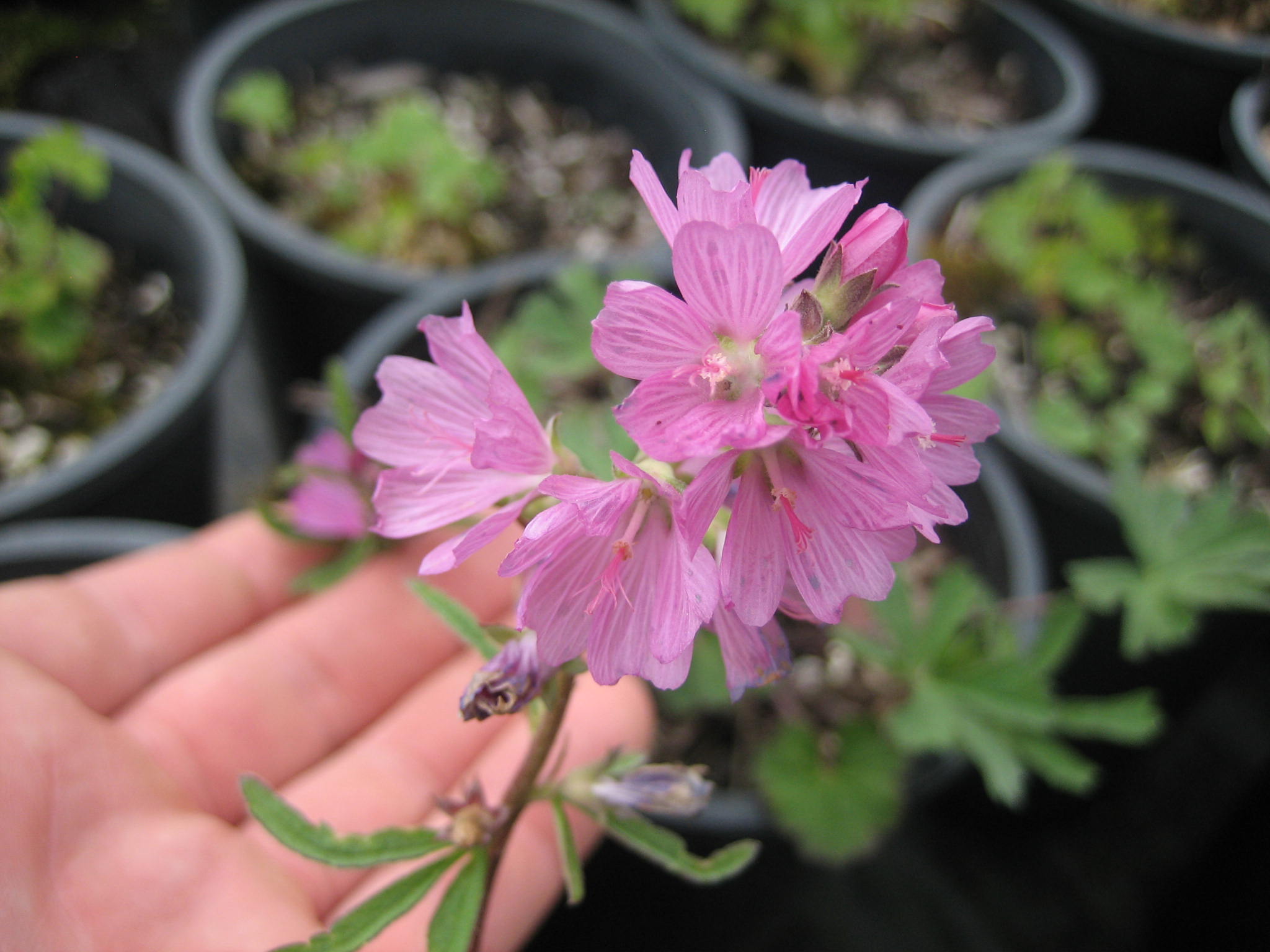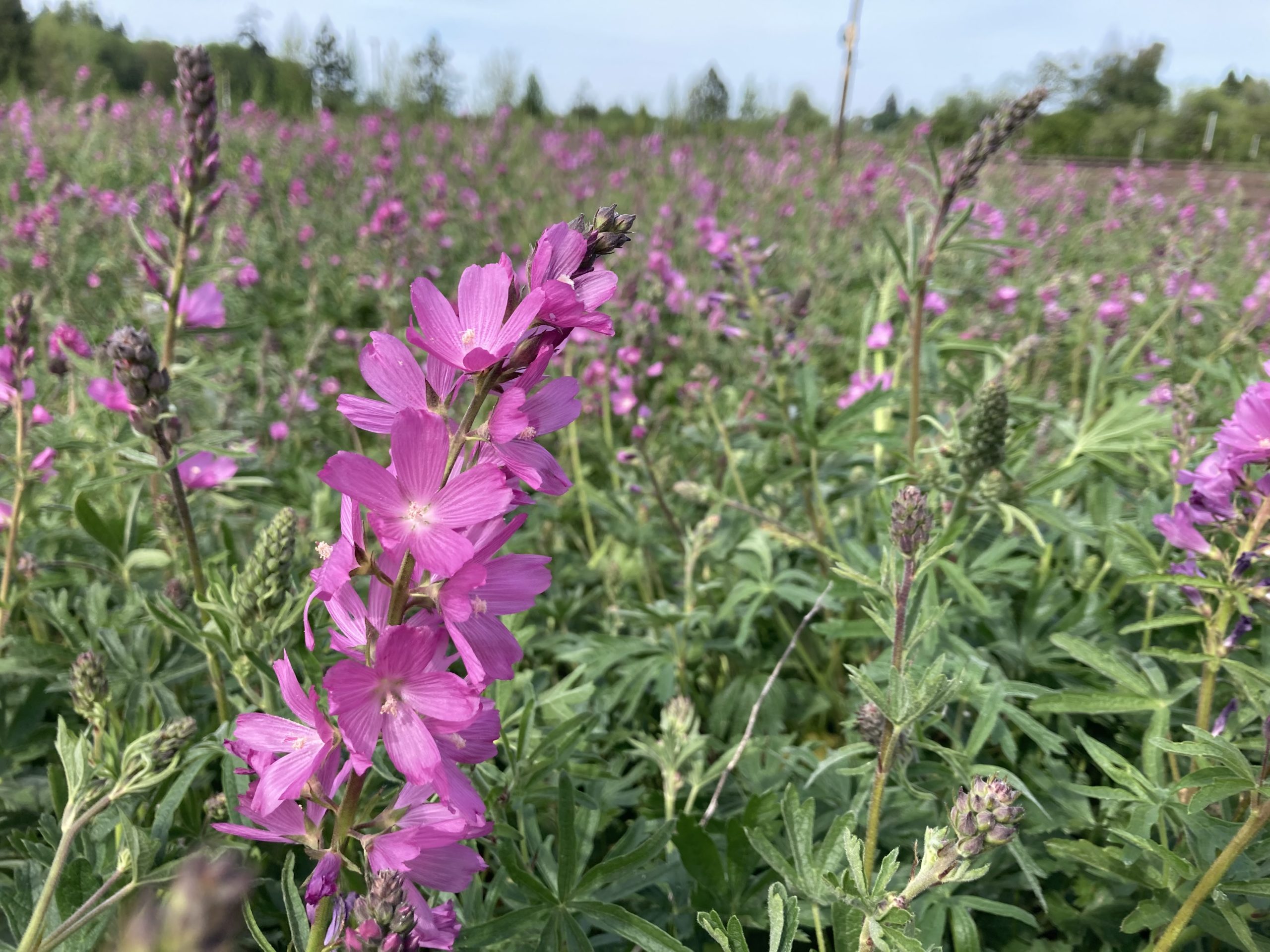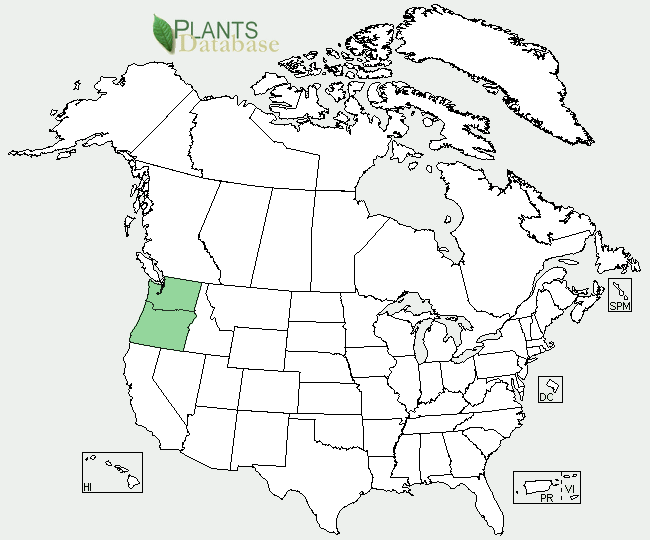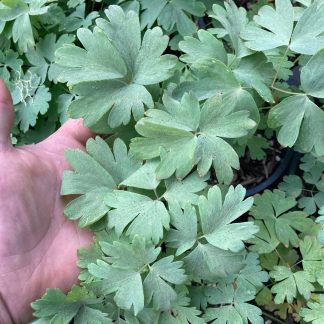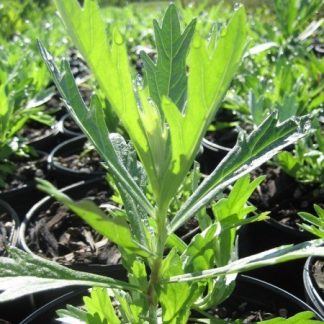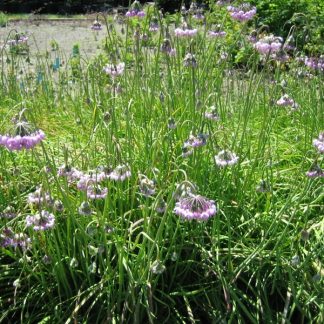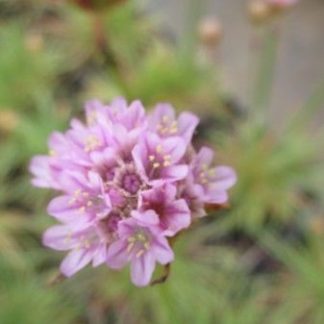Sidalcea malvaflora ssp. virgata
rose checker-mallow
Habit: a beautiful broad-leaf perennial with freely rooting trailing branches, about 3 feet in length. Soft, long strands of hair grow at the base of the stems, while shorter strands arranged in a star pattern cover the upper portions of the stems. Leaves are broad, hairy and deep green, varying in size along the stem. Basal leaves grow larger and their margins are split into 5-7 shallow lobes, while upper leaves stay smaller and are more deeply lobed. During its relatively long blooming season, ranging from April to late summer, the plant is dressed up with showy, light to deep pink flowers, which are loosely clustered in upright spikes. Petals are round, notched at the margins, and appear wrinkled with whitish veins.
Ecology: common in grassy hillsides, wetlands, open meadows, and along roadsides. Its native habitat falls within the central and southern Oregon coast and the Cascade Range. An isolated community is located in an open prairie in Southern Washington.
Growing conditions: favors full sun and moderately wet to rather dry soils. It is a reliable plant, mostly disease and pest free. Rose checker-mallow plays an important role in the environment, functioning as a host plant for the Gray Hairstreak and Checkered Skipper butterflies and providing nectar for Taylor’s Checkerspot butterflies and the nationally endangered Fenders Blue.
Sidalcea malvaflora is a remarkably variable species, 13 subspecies have been listed in North America. In order to distinguish Sidalcea malvaflora ssp. virgata from other checker-mallows west of the Cascades, look for the hairs arranged in a star pattern and the notched petals. The small community present in Washington is currently in risk of extinction. Conifers and other invasive species, particularly Scot’s broom (Cytisus scoparius), have been encroaching upon its limited habitat. This species has been historically maintained by fire.
Specs
Herbaceous Perennial
8-40 inches (20-100 cm)
12-24 inches (30-61 cm)
6 to 9

